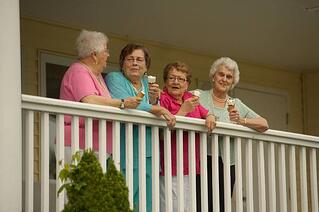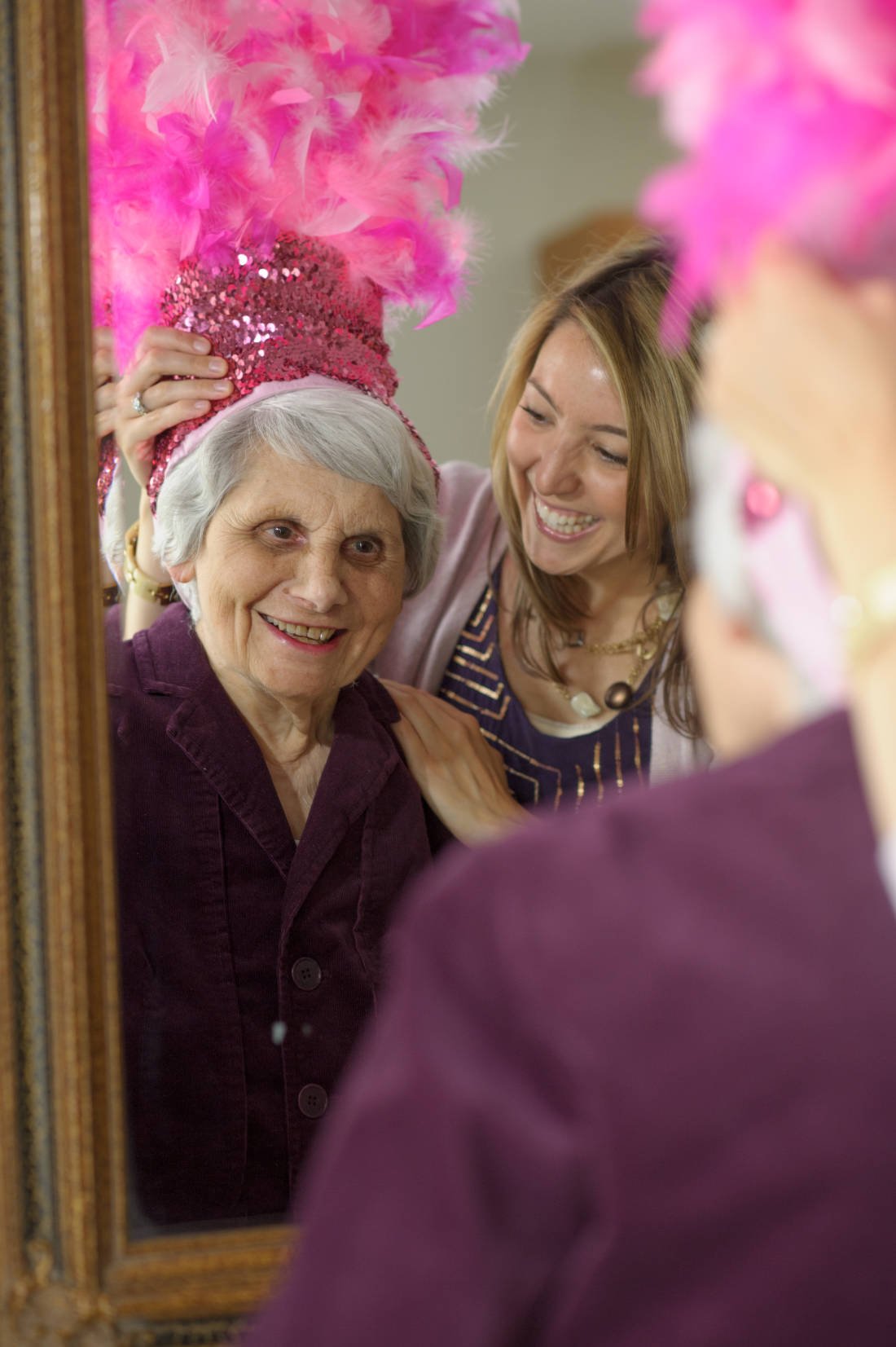The “S” Word in Assisted Living
 The number of Americans without any close friends has dramatically escalated over the past two decades, according to a report from the AARP. Unfortunately, older adults are not only particularly vulnerable to this phenomenon but are also more likely to struggle physically and emotionally due to isolation. Let’s take a closer look at why socialization (the “s” word) is so important for seniors. And find some caregiver tips for helping aging loved ones enjoy all of the benefits of spending time with others.
The number of Americans without any close friends has dramatically escalated over the past two decades, according to a report from the AARP. Unfortunately, older adults are not only particularly vulnerable to this phenomenon but are also more likely to struggle physically and emotionally due to isolation. Let’s take a closer look at why socialization (the “s” word) is so important for seniors. And find some caregiver tips for helping aging loved ones enjoy all of the benefits of spending time with others.
Seniors and Isolation
Everyone experiences loneliness now and again, but chronic isolation has been linked with everything from anxiety and depression to hypertension and weakened immune function. Researchers have further determined that a connection exists between isolation, cognitive decline, and dementia.
Why are seniors at increased risk of loneliness? Common aging factors, such as living alone, experiencing the death of close family members and/or friends, and loss of mobility may increase the risk for isolation. Even worse? It’s surprisingly easy to overlook signs of isolation -- particularly because many people try to hide these feelings and avoid giving the impression they may need help or support.
So how can caregivers ensure the social wellbeing of their aging loved ones? The Lubben Social Network Scale (LSNS) suggests that having at least two close family members, friends, or neighbors who can be called upon for help or companionship is essential. According to LSNS developer James Lubben, Ph.D., Louise McMahon Ahearn, Endowed Professor in Social Work at Boston College School of Social Work (BCSSW), a “diversified portfolio” is key when it comes to cultivating and maintaining a healthy social network.
Helping Seniors Connect
Luckily, there are some things caregivers can do to help aging loved ones maximize opportunities for socialization. According to the National Council on Aging, “Senior centers serve as a gateway to the nation’s aging network—connecting older adults to vital community services that can help them stay healthy and independent.” And while programs like meal delivery and transportation services may seem insignificant, they can add up to an invaluable support system. The best thing about senior centers? More likely than not, there’s one near you: approximately 11,400 senior centers in the US currently serve more than one million seniors every day.
Another way to help seniors connect -- literally? Technology. While there may be more barriers to entry for seniors, the benefits of perseverance are profound. From staying in touch with far-off family members through social networking to accessing educational resources aimed at helping them live better lives, technology has the power to bridge the gap between loneliness and near-endless opportunities for critical connection.
One last thing to keep in mind when it comes to seniors and socialization? While many older adults are attached to the idea of maintaining their independence by staying in their own homes, isolation is often an underestimated side effect of “aging in place.” Conversely, senior living communities not only offer plenty of opportunities for socialization, but senior living staff members are also well-positioned to notice signs of isolation in seniors. Many older adults and caregivers believe that when it comes to senior living options, “home is best” but in reality, most aging seniors need more than just the home environment in order to thrive. A safe and supportive community with friends and neighbors who are always close by and access to assistance and services when needed can help your loved one find peace of mind, companionship, and a new reason to wake up in the morning!
For aging loved ones who may be on the fence about whether senior living is right for them, a tour may highlight the many advantages of becoming part of an active senior living community.
Key Takeaways
- While isolation can lead to detrimental outcomes for everyone, seniors are, particularly at risk.
- A robust social network promotes enhanced physical and mental health among seniors.
- Caregivers can help seniors enjoy more active social lives by exploring different options for connecting with others, such as through programs offered by local senior centers and embracing technology.
- Senior living communities are overflowing with opportunities for socialization among aging adults.
About Marissa Salvesen
My journey into the world of senior living began when I started working for United Methodist Homes in 2010. Starting as an Activities Director at one of our-winning assisted and independent living communities and then transitioning to Marketing and Promotions Manager for UMH, I now work as the Manager of Mission Development, fostering the Mission and Values of our organization. I love sharing stories about the many ways we build meaningful relationships and enrich the lives of those we serve, and am proud to be part of building UMH’s 140-year legacy of caring. Wondering what makes our communities such special places to live and work? Connect with me and find out!

Our Blog is a 2016 Platinum Generations Award Winner! The Generations Award is an annual international competition for excellence in senior marketing recognizing professionals who have communicated to the 50+ Mature Markets.



